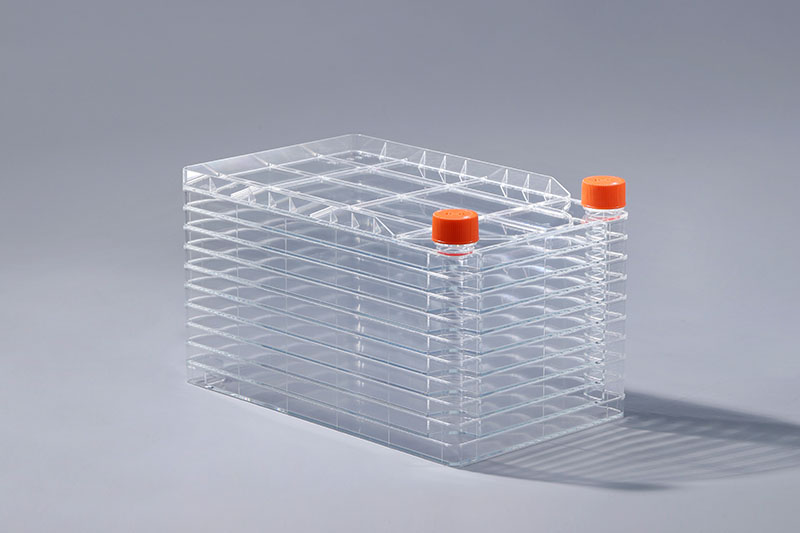Šūnu augšana ir atkarīga ne tikai no barības vielu daudzuma, bet arī normālai augšanai un vairošanai atbilstošā pH diapazonā. Tāpēc pirms cell factory izmantošanas liela mēroga šūnu kultūrai vispirms ir jāizmēra un jāpielāgo barotnes pH vērtība.
PH vērtība attiecas uz ūdeņraža jonu kopskaita attiecību. šķīdumā uz kopējo vielu daudzumu. Parasti šūnu augšanai nepieciešamās barotnes pH vērtība ir 7,2-7,4. Pārāk augsts vai pārāk zems neveicina šūnu augšanu. Šūnu fabrika šūnu kultivēšanai izmanto šķidru barotni, ko var izmērīt ar pH metru. PH metrs ir īpašs instruments šķīduma pH vērtības mērīšanai. Tas mēra šķīduma pH, izmantojot pH atlases elektrodu (piemēram, stikla elektrodu), un mērījumu rezultāts var būt precīzs līdz divām zīmēm aiz komata.
Tas ir jākalibrē ar standarta buferšķīdumu ar zināmu pH (parasti pH). 4~7) pirms lietošanas. PH metra elektrodu noskalo ar destilētu ūdeni un pēc tam iegremdē vārglāzes vidē, un barotnes pH var nolasīt no pH metra skalas. Katrs ražotājs sniedz detalizētu lietošanas instrukciju katram atšķirīgajam pH mērītājam.
Pēc mērījuma veikšanas, ja šūnu rūpnīcas izmantotās barotnes pH vērtība ir novirzīta, tā ir attiecīgi jāpielāgo. pH-metru var kalibrēt ar standarta buferšķīdumu ar zināmu pH līmeni, tad kompozītmateriālu elektrodu un pretestības termometru ievieto barotnē un lēnām pievieno atbilstošu daudzumu sālsskābes un nātrija hidroksīda no vārglāzes gala prom no elektrodu barotnes pagatavošanai. Sasniedziet un uzturiet vēlamo pH līmeni.
The FAI climbed 5.9 percent year-on-year in the first 11 months of 2018, quickening from the 5.7-percent growth in Jan-Oct, the National Bureau of Statistics (NBS) said Friday in an online statement.
The key indicator of investment, dubbed a major growth driver, hit the bottom in August and has since started to rebound steadily.
In the face of emerging economic challenges home and abroad, China has stepped up efforts to stabilize investment, in particular rolling out measures to motivate private investors and channel funds into infrastructure.
Friday's data showed private investment, accounting for more than 60 percent of the total FAI, expanded by a brisk 8.7 percent.
NBS spokesperson Mao Shengyong said funds into weak economic links registered rapid increases as investment in environmental protection and agriculture jumped 42 percent and 12.5 percent respectively, much faster than the average.
In breakdown, investment in high-tech and equipment manufacturing remained vigorous with 16.1-percent and 11.6-percent increases respectively in the first 11 months. Infrastructure investment gained 3.7 percent, staying flat. Investment in property development rose 9.7 percent, also unchanged.
 English
English



















































